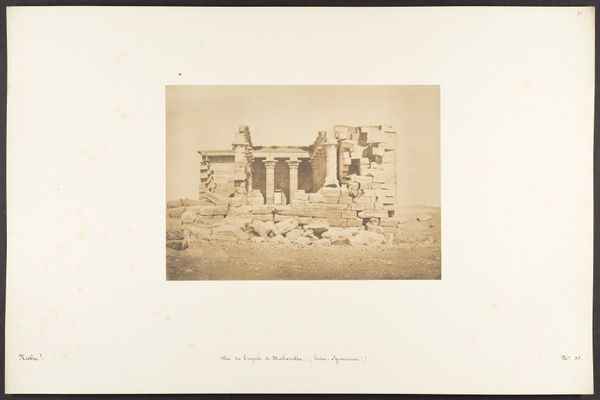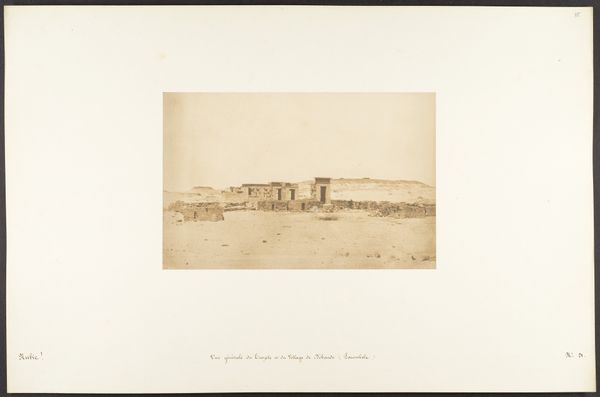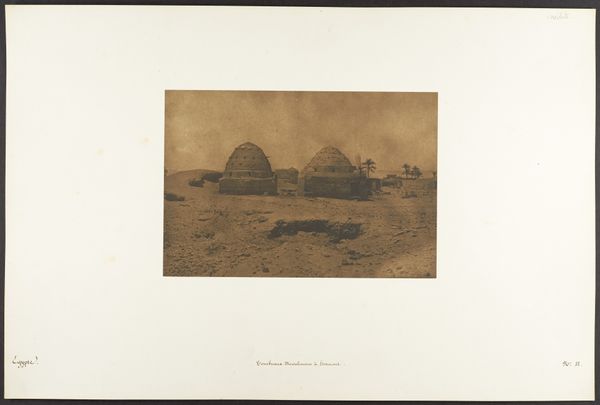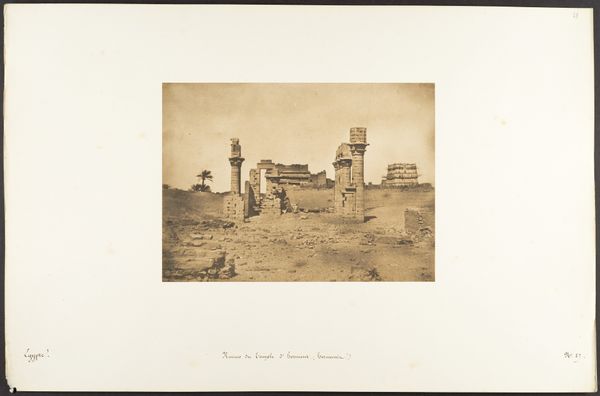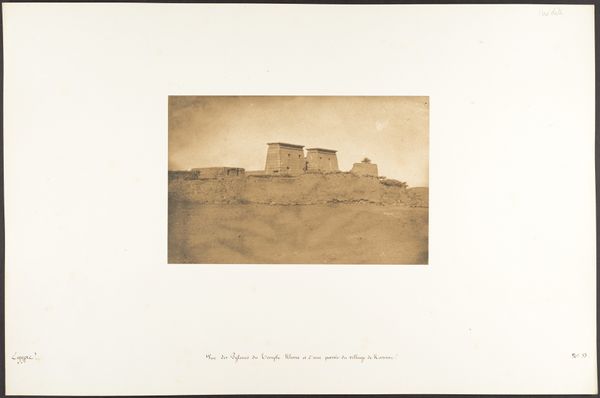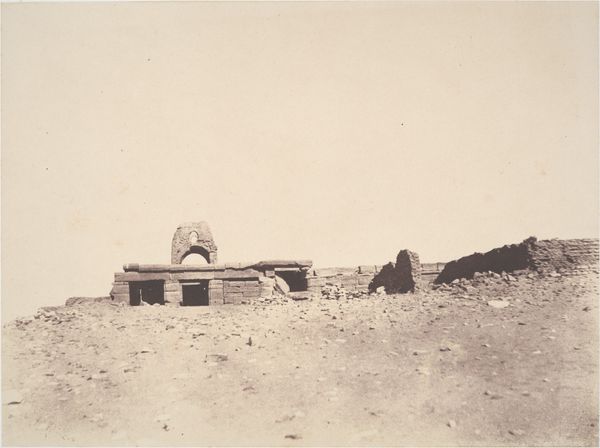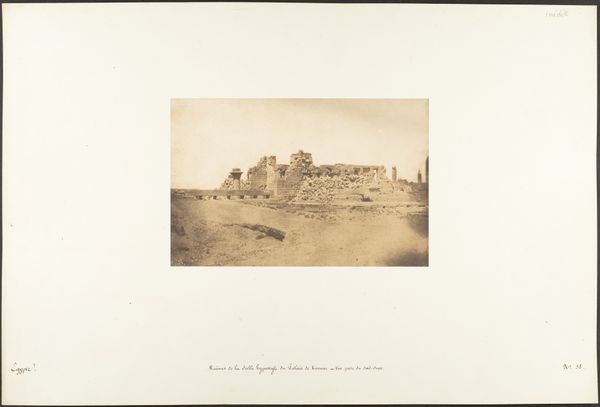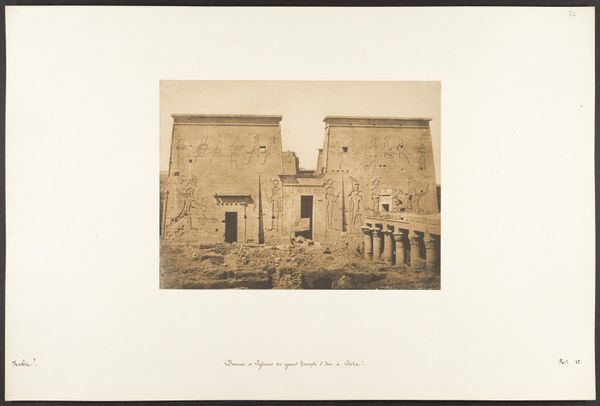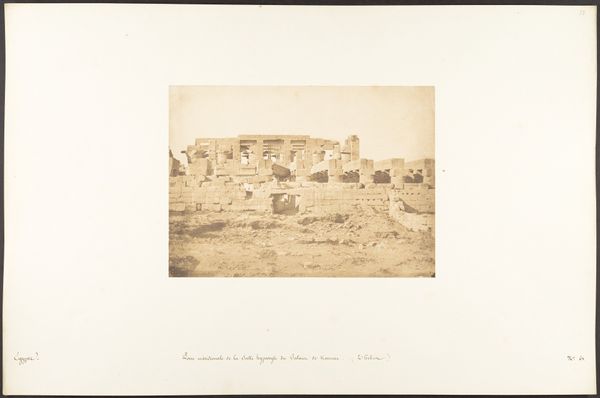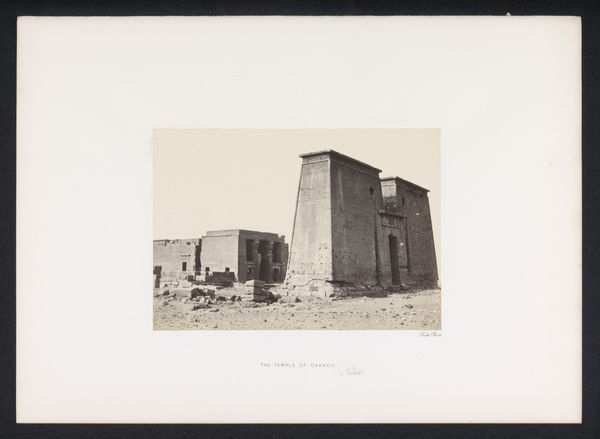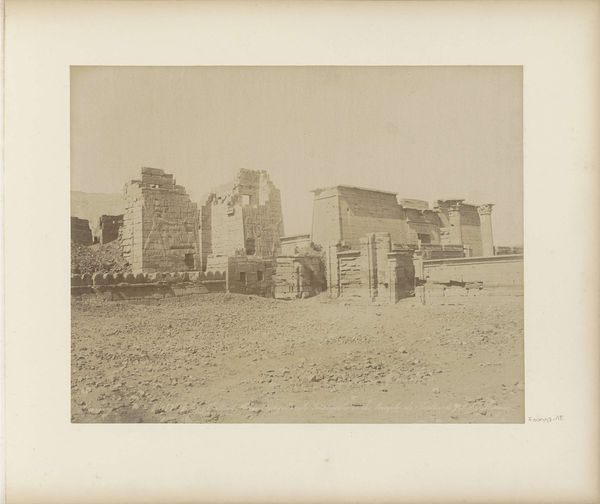
Vue du Temple d'Amada - Coupole ruinée d'une Eglise Copte 1850
0:00
0:00
daguerreotype, photography, architecture
#
landscape
#
daguerreotype
#
ancient-egyptian-art
#
photography
#
architecture
#
realism
Dimensions: Image: 8 7/8 × 6 9/16 in. (22.5 × 16.7 cm) Mount: 18 11/16 × 12 5/16 in. (47.5 × 31.2 cm)
Copyright: Public Domain
Editor: Looking at Maxime Du Camp's "Vue du Temple d'Amada - Coupole ruinée d'une Eglise Copte," a daguerreotype from 1850, I'm immediately struck by the desolation of the scene. The architectural ruins appear isolated. What exactly does this image say about 19th-century Egypt, from your perspective? Curator: It reveals much about the European gaze on Egypt at the time. Photography like this, especially daguerreotypes, served as documentation but also reinforced a narrative of a land to be explored and understood through a Western lens. How do you see the inclusion of human figures in the composition affecting the overall meaning? Editor: I noticed them too, they seem like intruders, not a part of the place. Maybe they symbolize the West's intrusion into Egypt? Curator: Precisely! Their presence hints at colonialism, scientific expeditions, and a certain romanticization of decay. But also, it gives scale to the building. How do you think the ruined state of the Coptic church ties into a broader historical context? Editor: Given the rise of archaeological interest in Egypt during this era, it's easy to see that. Is the focus of the image more the archeology of an important historical site or about the place in and of itself? Curator: An insightful question! It's both, but with a slant. It showcases a monument representative of a blend of ancient Egyptian and early Christian cultures, ripe for 'discovery' and interpretation, furthering specific colonial agendas. It represents control over narratives of power, really. Editor: I've definitely never looked at landscape photography this way. I was caught up in what's *in* the image, not the power that producing the image represents. Thanks! Curator: Indeed. Context is everything, influencing how we see and interpret such pieces and understand their complex historical impact.
Comments
No comments
Be the first to comment and join the conversation on the ultimate creative platform.
